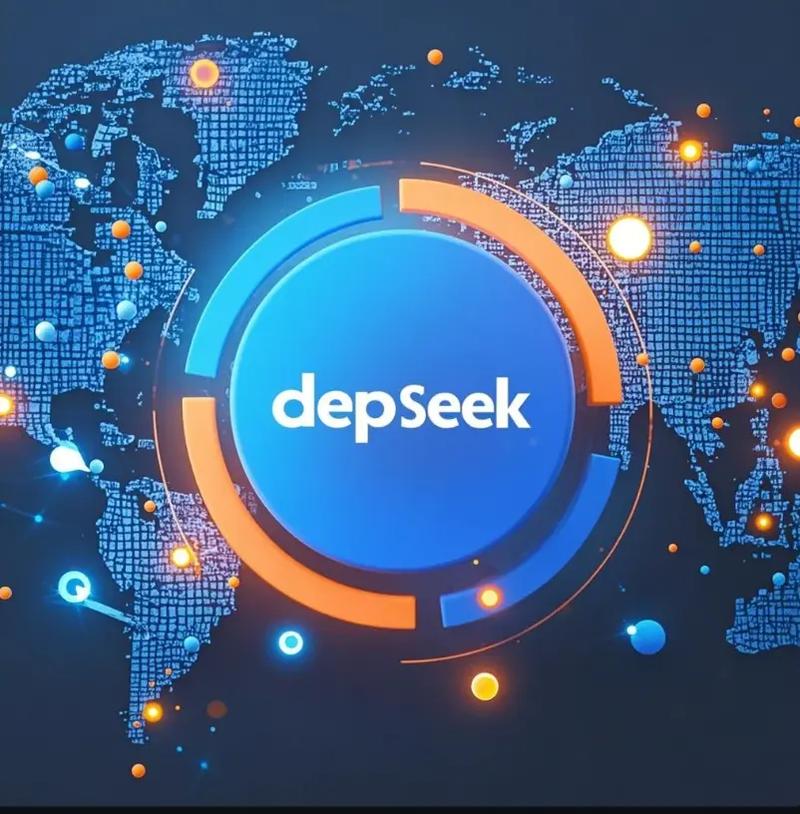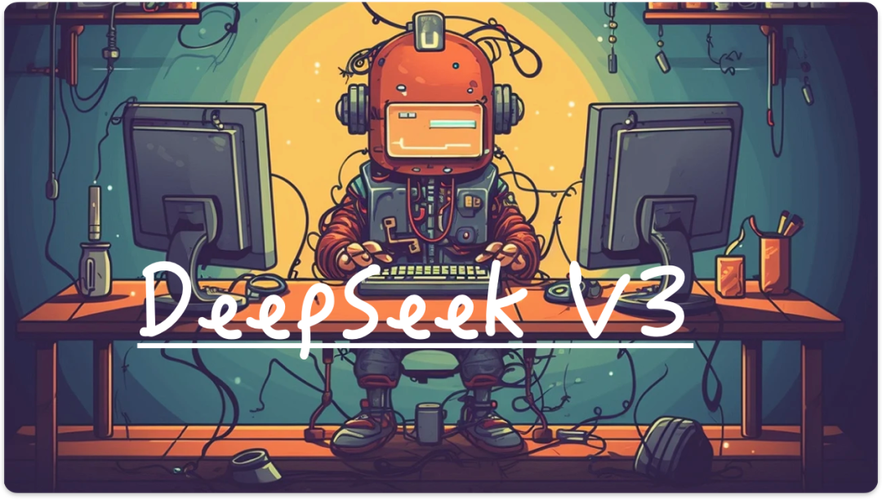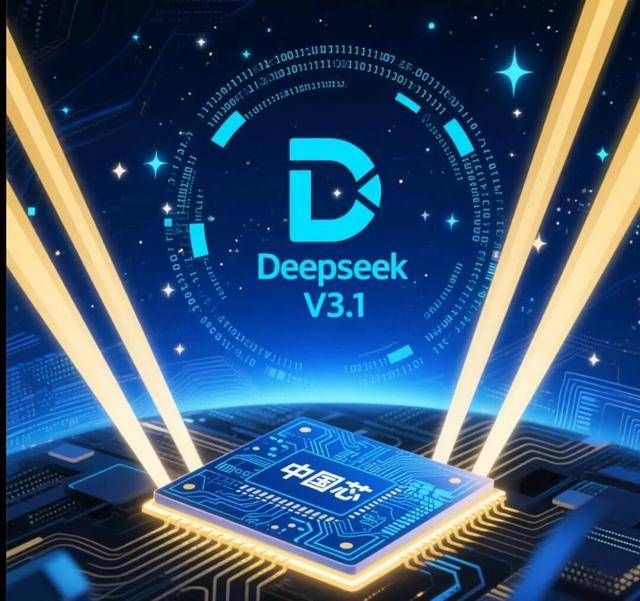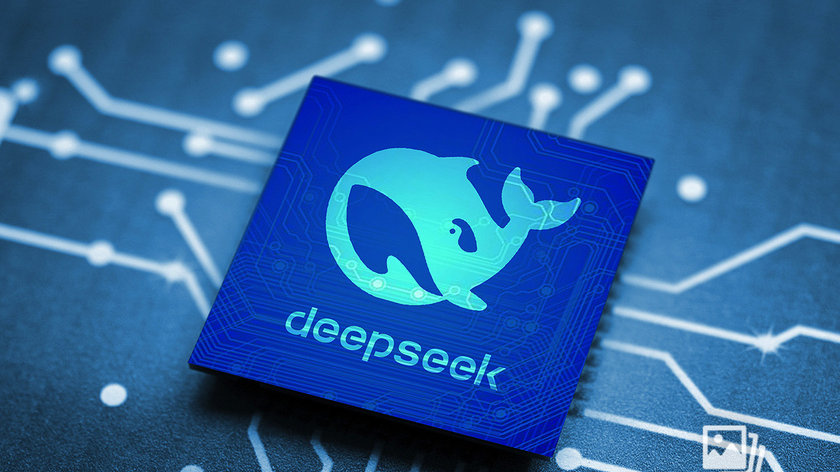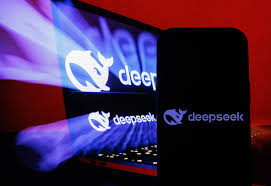What is DeepSeek? AI Model Basics Explained
As artificial intelligence rapidly advances, new contenders are emerging to challenge the status quo. One such rising star is DeepSeek—a powerful AI language model developed with next-generation architecture and open-source principles in mind. But what exactly is DeepSeek? How does it work, and why is it making waves in the AI world? In this detailed article, we explore DeepSeek from its technical roots to its real-world applications.
DeepSeek significantly reduced training expenses for their R1 model by incorporating techniques such as mixture of experts (MoE) layers.[19] The company also trained its models during ongoing trade restrictions on AI chip exports to China, using weaker AI chips intended for export and employing fewer units overall.[13][20] Observers say this breakthrough sent "shock waves" through the industry, threatening established AI hardware leaders such as Nvidia; Nvidia's share price dropped sharply, losing US$600 billion in market value, the largest single-company decline in U.S. stock market history.[21][22]
Table of Contents
Introduction to DeepSeek
Who Created DeepSeek?
Core Architecture Explained
What Makes DeepSeek Different?
DeepSeek's Key Models
DeepSeek-Coder: Specialized for Developers
The Power of MoE: Mixture-of-Experts
Performance Benchmarks
Supported Use Cases
Natural Language Understanding (NLU)
Multilingual Capabilities
Programming and Code Generation
Open Source and Local Deployment
How to Run DeepSeek on Your PC or Mac
DeepSeek vs GPT-4: A Comparative View
Integration in IDEs (VS Code, etc.)
DeepSeek and the Chinese AI Ecosystem
Ethical Considerations
Future Developments
Final Thoughts
1. Introduction to DeepSeek
DeepSeek is a state-of-the-art large language model (LLM) developed in 2023–2024, designed for a wide range of AI tasks including natural language understanding, generation, code completion, multilingual translation, and more. Its flagship model, DeepSeek R1, represents a powerful fusion of efficiency, scale, and open accessibility, and is widely used both in research and in production systems.
2. Who Created DeepSeek?
DeepSeek was created by a Chinese research team composed of engineers, AI scientists, and language model specialists. The project quickly gained attention for its ambitious scale and its release of open weights—unlike OpenAI, whose models are mostly closed.
Backed by:
Prominent Chinese tech investors
Collaboration with universities and research labs
Focus on both English and Asian languages
3. Core Architecture Explained
At the heart of DeepSeek lies a Mixture-of-Experts (MoE) architecture. Unlike traditional dense models like GPT-3 or GPT-4 that activate all neurons during a forward pass, MoE selectively activates a subset of expert networks.
Key Concepts:
Sparse activation → Only part of the model is used for each task
Reduces computation while preserving scale
Dynamic routing to select appropriate expert layers
This allows DeepSeek to scale up to hundreds of billions of parameters without sacrificing inference speed.
4. What Makes DeepSeek Different?
| Feature | DeepSeek | GPT-4 (OpenAI) |
|---|---|---|
| Open Weights | ✅ Yes | ❌ No |
| Mixture-of-Experts (MoE) | ✅ Core feature | ❌ Dense-only |
| Chinese Language Mastery | ✅ Excellent | Moderate |
| Local Use Support | ✅ Full (via GGUF/Ollama) | ❌ Cloud-only |
| Coding Performance | ✅ Optimized | ✅ Excellent |
DeepSeek distinguishes itself by balancing openness, performance, and cost-efficiency. It’s also especially strong in multilingual contexts, particularly Chinese.
5. DeepSeek’s Key Models
1. DeepSeek R1
Parameters: 671B (only ~37B active at once)
MoE architecture
Trained on massive multilingual and code datasets
Token limit: Up to 128,000
2. DeepSeek-Coder 6.7B
Focused on programming languages
Lightweight and efficient
Released in open formats (GGUF, HF Transformers)
6. DeepSeek-Coder: Specialized for Developers
DeepSeek-Coder is a fine-tuned LLM designed specifically for:
Writing code in multiple languages (Python, JS, Java, C++, etc.)
Generating unit tests
Explaining code behavior
Debugging and suggesting fixes
Refactoring and documentation generation
Developers love DeepSeek-Coder for its speed, accuracy, and offline usability.
7. The Power of MoE: Mixture-of-Experts
MoE divides the model into "experts"—small sub-models that specialize in different types of tasks. Only a few experts are activated per input.
Benefits:
Lower computational cost
Massive scaling potential
Flexibility for fine-tuning
Better performance on specialized tasks
DeepSeek R1 activates only two experts per token, with around 37B active parameters at a time—offering high performance with efficient resource usage.
8. Performance Benchmarks
DeepSeek consistently ranks high across benchmarks like:
HumanEval (code reasoning)
MMLU (multitask language understanding)
CMMLU (Chinese MMLU variant)
GSM8K (grade-school math)
BBH (big-bench hard)
In code-related benchmarks, DeepSeek-Coder outperforms CodeLlama and StarCoder, and is competitive with GPT-4.
9. Supported Use Cases
| Domain | Supported? |
|---|---|
| Essay and blog writing | ✅ Yes |
| Programming help | ✅ Yes |
| Language translation | ✅ Yes |
| Technical documentation | ✅ Yes |
| Customer support bots | ✅ Yes |
| Legal/contract review | ✅ (Limited) |
| Image generation | ❌ Not yet |
10. Natural Language Understanding (NLU)
DeepSeek understands complex sentence structures, nuances, and intent, making it suitable for:
Sentiment analysis
Question answering
Summarization
Classification
Text completion
It also supports long-form text, with up to 128K tokens in context.
11. Multilingual Capabilities
DeepSeek has shown superior performance in:
Simplified & Traditional Chinese
Japanese, Korean
Vietnamese, Thai
English, French, Arabic, Hindi
This multilingual optimization makes DeepSeek ideal for global businesses, localization workflows, and cross-lingual NLP tasks.
12. Programming and Code Generation
DeepSeek can:
Autocomplete functions and scripts
Write algorithms from pseudocode
Translate between languages (e.g., Python to Rust)
Suggest code improvements
Help with DevOps automation
Supported Languages:
Python, JavaScript, TypeScript
C/C++, Rust, Go
Java, Kotlin
HTML/CSS/SQL
Bash, PowerShell
13. Open Source and Local Deployment
Unlike OpenAI, DeepSeek allows local deployment:
Download GGUF quantized models
Run with tools like Ollama, LM Studio, KoboldAI
Compatible with Apple Silicon (M1/M2) and NVIDIA GPUs
This means no cloud dependency, better privacy, and cost savings.
14. How to Run DeepSeek on Your PC or Mac
Option 1: Ollama
bash复制编辑brew install ollama ollama pull deepseek-coder ollama run deepseek-coder
Option 2: LM Studio
Install LM Studio
Download DeepSeek GGUF model
Start server
Connect via VS Code extension (Continue/Open Interpreter)
15. DeepSeek vs GPT-4: A Comparative View
| Metric | DeepSeek R1 | GPT-4 |
|---|---|---|
| Model Type | MoE | Dense Transformer |
| Cost to Run | Lower | Higher |
| Open Source? | Partial | No |
| Local Use | Yes | No |
| Multilingual Performance | Excellent (Chinese) | Excellent (English) |
| Programming Help | Great | Great |
| Vision/Multimodal | Not yet | Yes (GPT-4o) |
16. Integration in IDEs (VS Code, etc.)
Developers can use DeepSeek as an assistant inside IDEs:
With “Continue” extension in VS Code
Copilot-style completions
Ask questions about selected code
Get real-time refactoring suggestions
Combine with local git tools and CI/CD pipelines
17. DeepSeek and the Chinese AI Ecosystem
DeepSeek is part of a broader national push for AI sovereignty in China. It’s designed to:
Provide a domestic alternative to OpenAI
Empower local developers with open tools
Support Chinese-language applications at scale
Run in high-security environments (banks, hospitals, etc.)
18. Ethical Considerations
DeepSeek’s ethical design is centered on:
Transparency in architecture
Open deployment (for trust and auditability)
Alignment with Chinese cybersecurity laws
Avoiding misuse through responsible licensing
Like all LLMs, DeepSeek faces challenges:
Hallucinations
Bias in training data
Potential misuse for disinformation
Ongoing research is aimed at reducing risks through instruction tuning and RLHF.
19. Future Developments
Planned improvements:
DeepSeek R2 with more efficient routing
Voice input/output and real-time transcription
Chat agent features with memory and tool use
Web UI similar to ChatGPT
Enterprise dashboards for monitoring LLMs
DeepSeek also plans to expand its model offerings to include:
Multimodal capabilities (image + text)
Agent-based automation systems
Smart contract and blockchain integrations
20. Final Thoughts
DeepSeek represents the next generation of AI—one that balances:
Open innovation
Efficient architecture
Multilingual power
Developer freedom
Whether you’re a student, a data scientist, or a CTO building the next-gen product stack, DeepSeek is worth exploring.
It doesn’t just compete with the best—it redefines what AI can look like when accessibility and performance come together.

